Tomorrow I’m going to be doing a tutorial on how to make a mid-late 18th century inspired bergere hat, so I thought that perhaps first I should tell you exactly what a bergere is, and we should look at lots and lots of bergere inspiration.
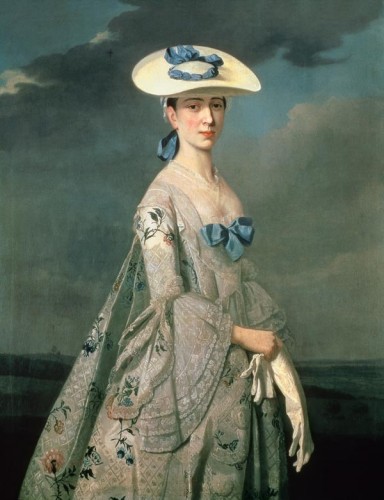
Eleanor Frances Dixie in a bergere, c. 1753, by Henry Pickering
A bergere is a low crowned, wide-brimmed hat, usually of straw, but sometimes made of other materials covered in silk. Bergere hats first appeared in the 1730s, and were popular in various forms throughout the 18th century.
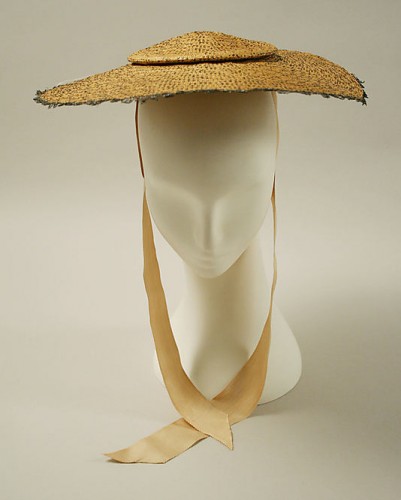
Bergère hat, 18th century, British, straw, Metropolitan Museum of Art
The style saw a revival in the 1860s, and the name was occasionally used in the decades after that to describe hats based on similar shapes, though these were more commonly called Gainsborough or picture hats. A 1930s fashion column even makes the link between the two.
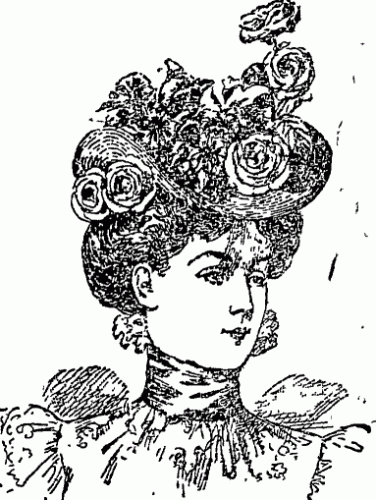
“Hat of blue straw, bergere shape” from the Auckland Star, November 1898
Bergere literally means shepherdess (the masculine shepherd is a berger), and the style has a strong link with 18th century pastorialism, and pastoral fashions. Bergere hats are also sometimes called milkmaid hats. It’s easy to see how a simple, wide-brimmed straw hat would be a useful part of a shepherdesses or milkmaids costume, protecting the skin from the sun and the eyes from glare.
Some authors have suggested that the bergere hat is named after Boucher’s famous portrait of Madame Bergeret with a bergere hat. This is very unlikely as the style of hat predates the painting by some ’30 years, and there is such a clear link between the shepherdess aesthetic and the bergere hat. More likely the painting is a coincidence, or Madame Bergeret posed with a bergere hat as a witty allusion to her name, somewhat like the juniper in Ginevra de’ Benci’s portrait.
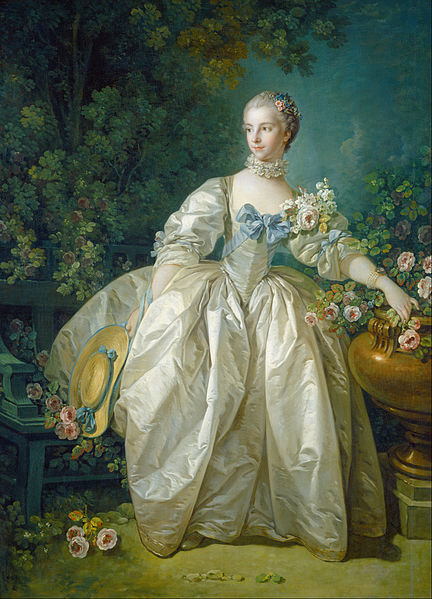
Madame Bergeret, c.1766, François Boucher
Here are some more variants on the bergere as inspiration for tomorrow’s post:
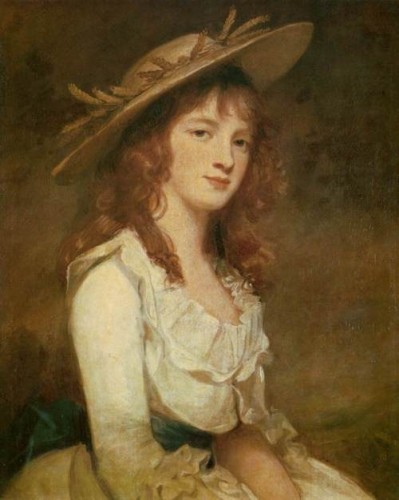
Miss Constable in a bergere hat, 1787, George Romney

Hat (bergère) French, 18th century, Straw with straw applique, MFA Boston

Bergere hat, 1760, straw with embroidered decorations, Victoria and Albert Museum (thanks all for finding it!)
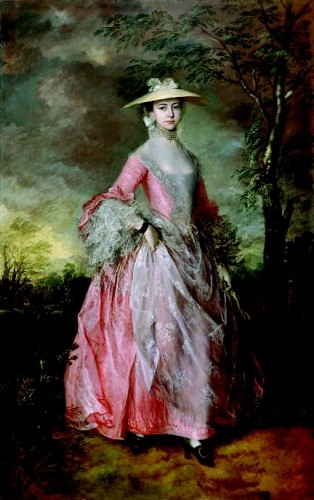
Mary, Countess of Howe in a bergere variant, Thomas Gainsborough, c. 1764

Woman’s Bergère
England, circa 1750, Silk, wood, paper, silk tulle, LACMA
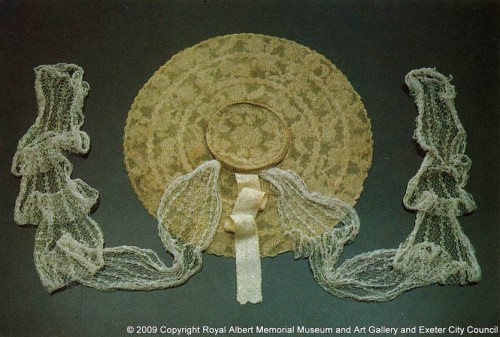
Bergere hat, English c1750, Royal Albert Memorial Museum
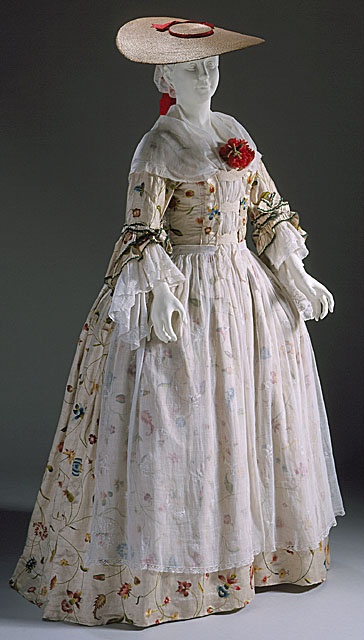
Hat, 1760s, LACMA

Bergere Hat 1760-1785 English, silk over straw, replaced ties, Colonial Williamsburg
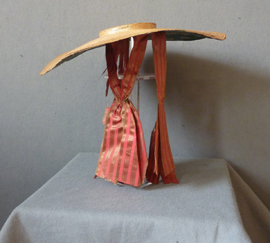
Bergere Straw Hat, c 1780, Meg Andrews
And check out the silk brocade lining of this one:

Bergere Straw Hat, c 1780, Meg Andrews

Bergere hat, 1780s, lined with ca 1715 Coromandel Coast chintz, Meg Andrews
Sources:
Bermingham, Anne and Brewer, John. Consumption of Culture: 1600-1800: Image, Object, Text. London: Routledge. 1995
Cumming, Valerie and Cunnington, C.W.; Cunnington, P.E, The dictionary of fashion history (Rev., updated ed.). Oxford: Berg. 2010
Grantland, Brenda and Robak, Mary, Hatatorium: An Essential Guide for Hat Collectors. Self Published. 2011
O’Hara, Georgina, The Encyclopedia of Fashion: From 1840 to the 1980s. London: Thames and Hudson Ltd. 1986

The embroidered one is from V&A, one of the inspirations for my own in the making…
I love the style, especially the simpler straw ones.
Isn’t the embroidered one spectacular! Such fabulous work! Thanks for identifying the collection, and can’t wait to see yours!
vam.ac.ukV&A Museum
http://www.vam.ac.uk/content/articles/h/hats-an-anthology-by-stephen-jones/
Laurie
pem.orgI saw that 1760’s hat at an exhibit in the Peabody Essex museum, http://www.pem.org/exhibitions/146-hats_an_anthology_by_stephen_jones
And here’s the Collections Online link – it’s all done in straw work!! http://collections.vam.ac.uk/item/O139640/hat-unknown/
Thanks Daniel!
Fascinating! I have always wondered how they stay on the head…I see similarities in Scarlett’s huge picnic hat, and even in Dior’s huge flat hats for the New Look.
Scarlett’s picnic hat (well, the originals it was based on) is an example of the 1860s revival of the bergere look, and the New Look was hugely influenced by the 1860s look – fashion just goes ’round and ’round again!
I wonder how easy one is to make.
Check out today’s post and you’ll find out!
Hi Leimomi,
Thanks for your blog which is so much inspiring.
Just a little observation. In french we write “bergère” not “bergere” 🙂
Alas, without copying and pasting my computer makes it very tricky to write “bergère” not “bergere” 😉
So I have a question. This hat looks a lot like the same sort of shape that was used in the broad, flat hats from the 1940s and 50s (like the cartwheel hats). Could they be called the same thing? Or is there something about them that makes the bergère hats different from those?
This is one of those fun word things. If you are talking about the general shape/style of the hat then a bergère is the same thing as a cartwheel (e.g ‘bergère style’ hat), but if you are talking about a specific historical garment, then a bergère is 18th century, and a cartwheel is an 1860s or 1950s hat, so if you tell people you bought a bergère, they should assume it was 18th century. Hope that is clear!
what are those large big feather hat called?
The big feathered beaver felt hats popular from 17th century onwards are sometimes called Cavalier hats, referring to UK Civil War costume- Puritans/Roundheads & Monarchists/Cavaliers – but popular all over Europe. Ruben’s portrait of Helène Fourment in a big feathered beaver, cocked to one side, started a female fashion that has never disappeared – you see it in portraits from then onwards. She was actually borrowing a male style that was very flattering and gave her a coquettish air.
I love your information but –alas, I missed your instruction on how to make a bergere hat, and I so want to have/make one for an 18th costume I am making and want to wear in November and again in May 2016. Any things published or retrievable on this?
Hi Kay,
You can find the instructions on my tutorials page: https://thedreamstress.com/resources/tutorials/
If you scroll down below this comment you’ll also see links to ‘Previous Post’ and ‘Next Post’ – which is the tutorial!